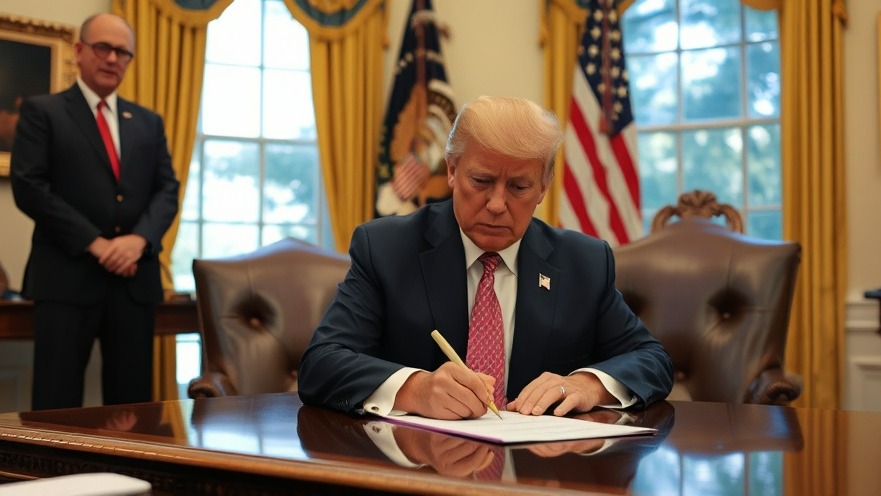
Trump's Executive Order and the Future of Timber Production
On March 1, 2025, President Donald Trump signed an executive order aimed at increasing domestic timber production to reduce reliance on imported lumber. With the Immediate Expansion of American Timber Production order, the President directed federal agencies like the Bureau of Land Management (BLM) and the United States Forest Service (USFS) to streamline processes, thereby facilitating quicker administrative approvals for timber production. This initiative comes in response to a significant dependence on foreign timber sources, particularly from Canada, which supplies approximately 70% of America’s timber imports.
Why Domestic Timber Production Matters
The executive order reflects an ongoing debate about the balance between domestic resource utilization and environmental concerns. Trump highlighted the potential for job creation and economic benefits as crucial justifications for this policy. He argued that enabling full utilization of domestic timber resources would not only enhance job opportunities within the U.S. but also mitigate risks associated with external dependencies. By decreasing the import reliance, the administration aims to bolster national security and economic resilience in the timber sector.
Forest Management: A Double-Edged Sword
While expanding domestic timber production may provide economic benefits, there are unresolved concerns regarding forest management. ResourceWise CEO, Pete Stewart, expressed skepticism about the ability of the U.S. to effectively process increased timber outputs. He pointed out the need for significant infrastructure investment, estimating that over 150 new mills would be necessary to meet increased production demands. Stewart noted, "How does it affect those that are in building and architecture? It's probably not going to do anything at all." This highlights a gap between the intention of the executive order and the practical realities facing the timber industry.
Financial Implications: The Cost of Tariffs
The trade dynamics surrounding timber production could shift significantly as a result of this executive order. Trump's initiatives might lead to the imposition of tariffs on imported lumber, particularly from Canada, which could escalate tensions in trade relations and affect construction costs in the U.S. The National Association of Home Builders estimated that imports made up a staggering $13 billion of the $184 billion worth of goods used in the construction market. If tariffs are enacted, consumers may face increased costs in building materials and, ultimately, housing.
Environmental Considerations: Balancing Economies with Ecology
Environmental factors must also be considered in the evolution of this timber policy. The executive order could lead to improvements in federal forest management, including the clear-cutting of diseased trees, which could help reduce wildfire risks. Stewart suggested that if the order prompts the federal government to maintain healthier forests, this may yield ecological benefits alongside economic ones. However, any significant cuts or alterations to forested land carry inherent risks to biodiversity and wildlife habitats, raising questions about sustainable practices in the timber sector.
Public Participation and Future Predictions
Trump's order stipulates that many of the proposed regulatory changes will include public comment periods, providing an opportunity for industry stakeholders and environmental groups to have a voice in shaping policy. This aspect is crucial, considering the diverse perspectives surrounding timber production. As agencies begin their assessments regarding the national security implications of timber imports, there exists the potential for a lengthy and contentious process unfolding over the next year.
The ultimate impact of this executive order remains uncertain. Experts warn that even if domestic production is ramped up, it will take years—if not longer—to build the necessary infrastructure and mills to process this timber effectively. The feasibility of increasing domestic timber reliance without decimating existing forest ecosystems poses a challenging dilemma for policymakers.
In conclusion, the path forward for American timber production is filled with complexities. As policies are shaped in the coming months, ongoing dialogue between stakeholders will be crucial. How this executive order unfolds could have lasting ramifications for both the economy and the environment.
 Add Row
Add Row  Add
Add 




Write A Comment